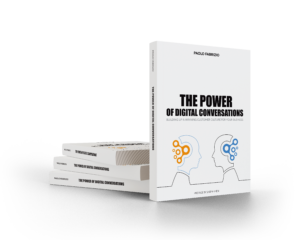Every time customers ask for support, they have great emotional expectations before having any kind of interaction: entering a shop, calling or having a live chat with one of your agents. From a company’s standpoint instead the approach is usually a bit different: ‘how can I make the best of conversations to deliver great experiences – and sell more?’ Here useful tips to let your next one shine.
When customers ask for your help
‘My fridge doesn’t work anymore, are you coming to take it away when delivering my new one?’
‘I’ve been charged twice but I have only one Wi-Fi subscription!’
‘I’ve paid out my debit, but you sent me a payment reminder…are you serious?!’
These verbatim examples reflect the approach that customers tend to express when asking for support, for help. Therefore they adapt their language to their feelings and the conversational channel they decide to start the conversation with: calling, sending over an email, a Whatsapp message, commenting on your social media page or having a live chat. Almost in real time – or at least – that’s what they expect to have. If you are a customer service manager you know pretty well that it’s not that easy to fine tune with the customer, especially if your support team has to move frantically from one channel to another. That’s why one of the key skills customer service teams need to strengthen, today more than ever, is emotional intelligence. Otherwise they misunderstand customer’s behaviors, ending up in long lasting and mutually frustrating experiences.
When you have the first conversation with me
Now I take you behind the scenes of my activities. In particular when a customer service / experience manager gets in touch with me – most of the times they use my contact page to drop me a few lines about their needs. After that, we usually agree to have an informal video chat to check out if there are the conditions to work together. So whenever I have such first informal chat with potential client companies I start listening to their current goals, desires and pain points. Whilst I’m doing that, I write down some brief notes to fix the most relevant information and inputs that my interlocutor is providing – otherwise I would forget important parts of our conversation. Of course I also ask questions to get key information I need to know about the company my interlocutor represents and the structure of their customer service department, such as:
- What channels are you currently using to deliver customer support?
- How many people compose your customer service team?
- Is your customer service team in-house, partially-outsourced or fully-outsourced?
- Are you equipped with an omni-channel platform?
- What are your next (digital) customer service challenges?
Tips for the next conversation with your customers
Of course I prepare my questions prior to the video chat and I adapt them according the inputs received in the first incoming message. I encourage you to do a similar preparation beforehand, whenever you may have a scheduled call with your customer; take your time regardless the topic you’re going to discuss with them or the conversational channel (e.g. phone or video-chat) and you’ll get three huge benefits:
- You drive the conversation – since you have planned content and structure of it.
- You optimize time – since you have estimated in advance the agenda and the duration.
- The customer appreciates your method – and consequently perceives your professionalism and attention to details.
Over to you
Are you making the best of conversations with your customers? Are your agents emotionally skilled to master both incoming and outgoing interactions?
Let’s have a private, informal conversation about that.
Have great conversations.
Image credit: Unsplash.com







